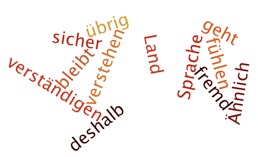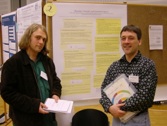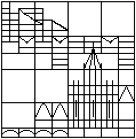

Die Macht der Worte, kreativ unterwegs ... der Anlass bestimmt die Sprache. Besuchen sie die Sprachspieler-Wortschöpfer-Webseite www.leTanneur-wortwerk.de (im Aufbau).


Bildung ist ein Gut, das man nicht kaufen kann, sondern ein Leben lang erwirbt. Institutionen, Freunde, Menschen und Lehrer können höchstens dabei helfen, eigene Ziele zu finden und ihnen näher zu kommen. Auf folgender Seite verschenke ich Unterrichtsmaterial, also verschiedenste Unterlagen zu verschiedensten Themen (mindestens: Mathematik, Deutsch, Musiktheorie): www.die-weisgerberei.de (im Aufbau).
Dazu gehört unvermeidlich das flammende Plädoyer für mehr Kreativität in der Bildung: LeTanneur‘s Blog: „Leben, Lernen und der ganze Rest“. Eine fragmentarische Bloglosse. Nachzulesen hier: leTanneur.wordpress.com
(Universität Konstanz)
Es gab einmal die Zeit, da hatte ich noch die Gelegenheit, mich tief und gründlich um wunderbare linguistische Phänomene zu kümmern. Aus dieser Zeit stammen alle hier aufgelisteten Fundstellen.
From ‘location’ to ‘place’, from ‘path’ to ‘way’: spatiophysical constellation, spatial language, and a lexical-semantics model
Matthias Weisgerber, Universität Konstanz
The current paper deals with formally modelling the impact that spatial constellation has on linguistic representation, focusing on the step from localization calculus (referred to e.g. by prepositions) to event calculus: While in x refers to possible positions, x is in y denotes a truth statement, depending on the physical and topological structure of x, on y and on the force-and-support makeup of the world. In a spatiopyhsical calculus, locating of objects is then retricted to cases where the object finds the kind of (physical) support it needs to rest in a stable position.
A formal model will be given along the following lines: Three conceptual competitors, (moving-object, support-object, and path), mutually contribute to situation modelling. If the moving object needs contact to the ground (a conceptual feature) and if the ground object provides this support, then the underdetermined path adapts to the ground object's shape yielding a more determined path representation. When finally motion takes place, one ‘way’ along the direction of the moving object's motion is chosen. The model will be successively applied to lingustic examples (über / over, above; auf / on; entlang / along; klettern, steigen / climb, rise; fliegen / fly).
One main new contribution of the framework is the fact that the determination process of the path is made explicit, and that ‘force and support’ reasoning is explicitly involved in modelling. The model, an interface between conceptual/semantic structure and the perceiver's conceptualization of the physical world, meets the conceptual-semantic Jackendoff paradigm, though being more algorithmically formal.
Begutachtete Artikel und Buchkapitel
• (Weisgerber forthcoming): Where lexical semantics meets physics: Towards an algorithmic lexical framework for modelling path motion, in M. Dimitrova-Vulchanova and E. van der Zee (eds), Motion encoding in Language, Oxford University Press, Oxford, 50 pages, p. ??-??.
• (Geuder and Weisgerber under revision): On the geometrical representation of concepts. Reflections on Peter Gärdenfors (2000): Conceptual Spaces, under revision for: Linguistics and Philosophy pp. ??–??.
• (Dimitrova-Vulchanova and Weisgerber 2008): ‘Concept’, ‘Context’ and beyond: Manner of motion verbs encoding, and relevant bits of information, in Dimitrova-Vulchanova and Koeva (eds), Selected papers from FASSBL 5, guestvolume with Southern Journal of Linguistics, USA, pp. 261–285.
Weitere Publikationen
• (Geuder and Weisgerber 2008): Manner of Movement and the Conceptualisation of Force, in: semanticsarchive.net, Date submitted: 2008 03 31, http://www.semanticsarchive.net/Archive/Tk5YmEwN/
• (Geuder and Weisgerber 2006): Manner and causation in movement verbs, in C. Ebert and C. Endriss (eds), Proceedings of Sinn und Bedeutung 10, tenth meeting of the Gesellschaft für Semantik, Humboldt-Universität Berlin, October, 2005, Vol. 43 of ZAS Papers in Linguistics, Berlin: ZAS, pp. 125–138.
• (Weisgerber 2006): Decomposing path shapes: About an interplay of ‘manner of motion’ and ‘the path’, in C. Ebert and C. Endriss (eds), Proceedings of Sinn und Bedeutung 10, tenth meeting of the Gesellschaft für Semantik, Humboldt-Universität Berlin, October, 2005, Vol. 43 of ZAS Papers in Linguistics, Berlin: ZAS, pp. 405–420.
• (Assadollahi, Geuder and Weisgerber 2005): Spatial semantic features: convergent vs. divergent verbs, in K. Opwis and I.-K. Penner (eds), Proceedings of KogWis05. The German Cognitive Science Conference 2005. September 7th – 9th, 2005, Basel, Switzerland, Schwabe & Co. AG, Verlag und Druckerei, pp. 1–6.
• (Weisgerber 2005b): Where lexical semantics meets spatial description: a framework for ‚klettern‘ and ‚steigen‘, in E. Maier, C. Bary and J. Huitink (eds), Sinn und Bedeutung 9, Proceedings of the ninth meeting of the Gesellschaft für Semantik, Nijmegen, October, 2004, Radboud University of Nijmegen, Nijmegen, pp. 507–521.
• (Weisgerber 2005a): LaTeX leicht lernen. Eine Einführung in den wissenschaftlichen Textsatz. Skript zur Lehrveranstaltung, 96 Seiten.
• (Weisgerber 2004): Stable Categories as a Basis for Concepts, in L. Alonso i Allemany and P. Egré (eds), Proceedings of the Student Session of the 16th European Summer School in Logic, Language, and Information (ESSLLI), FoLLI, The European Association for Logic, Language and Information, Nancy, pp. 265–275.
• (Geuder and Weisgerber 2003): Domains, concepts, and conceptual spaces, in F. Schmalhofer et al. (eds), Proceedings of EuroCogSci 03, the European Cognitive Science Conference 2003, Erlbaum, Mahwah NJ, p. 388.
• (Geuder and Weisgeber 2002): Verbs in conceptual space, in G. Katz, S. Reinhard and P. Reuter (eds), Sinn und Bedeutung 6, Proceedings of the sixth meeting of the Gesellschaft für Semantik, Osnabrück, October, 2001, University of Osnabrück, Osnabrück, pp. 69–84.
• (Geuder and Weisgerber 2001): Zur konzeptuellen Repräsentation polysemer Verben, in J. Dölling and T. Zybatow (eds), Linguistische Arbeitsberichte, number 76 in Linguistische Arbeitsberichte, Institut für Linguistik, Universität Leipzig, Leipzig, pp. 221–250.
• (Weisgerber 1999): ‚Öffnen‘ und ‚aufmachen‘. Eine empirische Studie zum Gebrauch zweier Verben, Arbeitspapier 103, Fachgruppe Sprachwissenschaft der Universität Konstanz, Konstanz.
Examensarbeit
• (Weisgerber 2001): Prototypkategorien, Ähnlichkeitsmodelle und Verben, Staatsexamensarbeit, Universität Konstanz, Konstanz. 118 pages. (Staatsexamensarbeit)
Herausgegebene Tagungsbände
• (Meier and Weisgerber 2004): Sinn und Bedeutung, sub8, Proceedings of the eighth meeting of the Gesellschaft für Semantik, Frankfurt, October, 2003, Band 117 der Arbeitspapiere des Fachbereichs Sprachwissenschaft (University of Konstanz Linguistics Working Papers), Universität Konstanz, Konstanz. Elektronisch verfügbar unter http://www.ub. uni-konstanz.de/kops/volltexte/2004/1383/ .
• (Weisgerber 2003): Sinn und Bedeutung, sub7, Proceedings of the seventh meeting of the Gesellschaft für Semantik, Konstanz, October, 2002, Band 114 der Arbeitspapiere des Fachbereichs Sprachwissenschaft (University of Konstanz Linguistics Working Papers), Universität Konstanz, Konstanz. Elektronisch verfügbar unter http://www.ub.uni-konstanz de/kops/volltexte/2003/1103/ .

• From ‘location’ to ‘place’, from ‘path’ to ‘way’: spatiophysical constellation, spatial language, and a lexical-semantics model. Invited talk at the workshop „Spatial Models meet spatial language“within the 4th International
Conference on Spatial Cognition, Rome, 14. September 2009.
• Concept and context in linguistic motion encoding: relevant bits of information, and more formal insights. Workshop ‚Spatial Language in Context: Computational and Theoretical Approaches to Situation-Specific Meaning (within “Spatial Cognition 2008”)’, Schloss Reinach, Freiburg, 19. September 2008. [Zusammen mit Mila Dimitrova-Vulchanova]
• Modelling Motion in the Algorithmic Lexicon: new insights, new examples. Invited talk at the workshop „Formal approaches to language as a cognitive system II“, Abo University, Turku, april 10-11, 2008.
• Manner of movement and the conceptualisation of force. Il y a manière et manière, Arras, 28. März 2008, [Zusammen mit Wilhelm Geuder].
• Modelling Motion: Towards a lexical semantic framework for the Language of Motion, Manner and Space. Invited talk at SALSA-II, Computer Linguistics Department, Universität des Saarlandes, Saarbrücken, 13. März 2008.
• „Sie rasseln und scheppern die Straße entlang“: towards a conceptual semantics framework for modelling path superimposition effects. Sinn und Bedeutung 12, Oslo, 20. September 2007.
• Integrating context in semantic representation. Workshop ‚Formal approaches to language as a cognitive system‘, Tampere, 13. August 2007. [Zusammen mit Mila Dimitrova-Vulchanova]
• The algorithmic lexicon: Towards a conceptual semantics model for motion. Workshop ‚Formal approaches to language as a cognitive system‘, Tampere, 12. August 2007.
• Force antagonism in the semantics of movement verbs, FiGS 2007: Forces in Grammatical Structures, Paris, January 2007. [Zusammen mit Wilhelm Geuder]
• ‚Convergent‘ vs. ‚Divergent‘ Verbs, and the asymmetry between Source and Goal. Sinn und Bedeutung 11, Barcelona, 21. September 2006. [Zusammen mit Wilhelm Geuder, Ramin Assadollahi]
• Conceptual models and utterance interpretation: A case study from movement verbs. Utterance interpretation and cognitive models, ULB, Bruxelles, 23. Juni 2006. [Zusammen mit Wilhelm Geuder]
• On the geometrical representation of concepts. The 2006 Milan Meeting, Gargnano, 15. Juni 2006. [Zusammen mit Wilhelm Geuder]
• ‚Concept‘, ‚context‘, and beyond: Manner of motion verbs encoding, and relevant bits of information. Formal Approaches to South Slavic and Bulgarian Languages (FASSBL-5), Sofia, October 2006. [Zusammen mit Mila Dimitrova-Vulchanova]
• Manner and causation in Movement Verbs. 21st Scandinavian Conference of Linguistics, NTNU Trondheim, 2. Juni 2005, sowie Sinn und Bedeutung 10, Humboldt-Universität Berlin, 15. Oktober 2005. [Zusammen mit Wilhelm Geuder]
• Decomposing Path Shapes: About an Interplay of ‚Manner of Motion‘ and ‚the Path‘. Sinn und Bedeutung 10, Humboldt-Universit ̈at Berlin, 15. Oktober, 2005.
• Spatial semantic features: convergent vs. divergent verbs. KogWis05. The German Cognitive Science Conference, Universität Basel, 8. September 2005. [Zusammen mit Ramin Assadollahi, Wilhelm Geuder]
• Where lexical semantics meets spatial description: A framework for ‚klettern‘ and ‚steigen‘. Sinn und Bedeutung 9, Nijmegen, 2. November 2004.

• Stable categories as a basis for concepts. Posterpräsentation bei der ‚Student Session of the 16th European Summer School in Logic, Language, and Information (ESSLLI)‘, Nancy, 9.-20. August 2004.
• Domains, Concepts, and Conceptual Spaces. Posterpräsentation bei der ‚EuroCogSci 03, the European Cognitive Science Conference‘, Osnabrück, 10.-13. September 2003. [Zusammen mit Wilhelm Geuder]
• On the geometrical representation of concepts. Workshop on Lexical Semantics, Mitteleuropa Foundation, Bozen, 9. April 2003. [Zusammen mit Wilhelm Geuder]
• Verbs in Conceptual Space. Sinn und Bedeutung 6, Osnabrück, Oktober 2001. [Zusammen mit Wilhelm Geuder]



